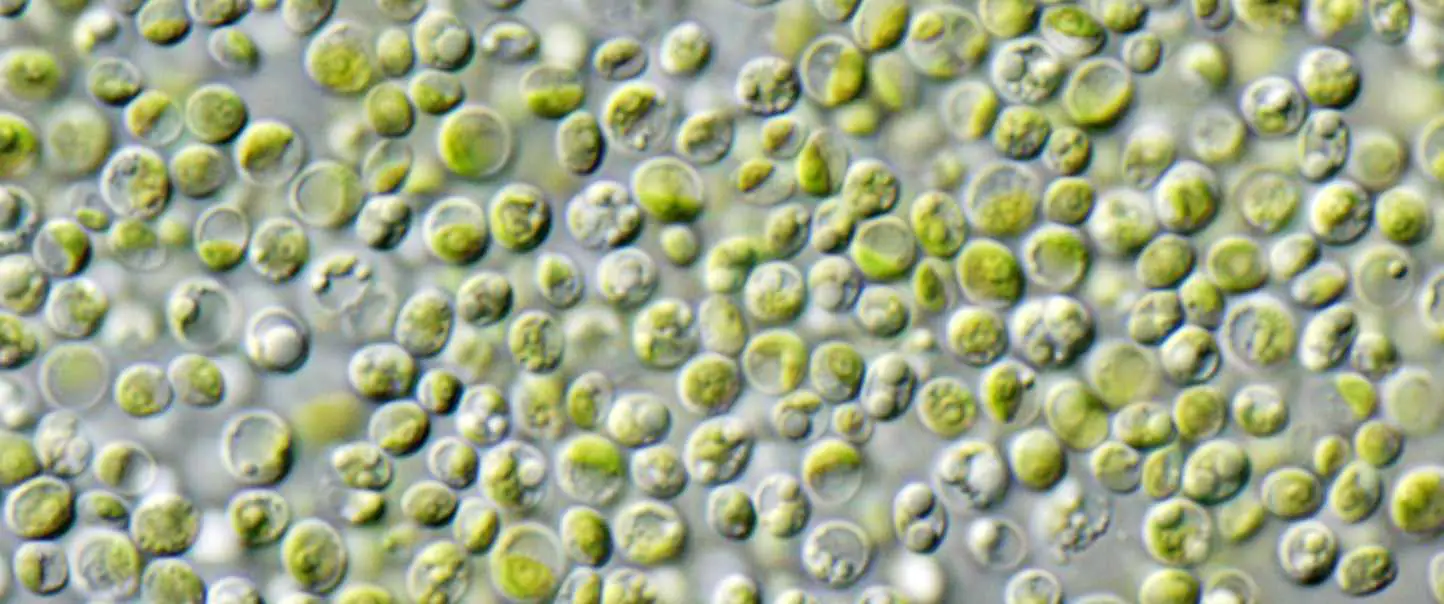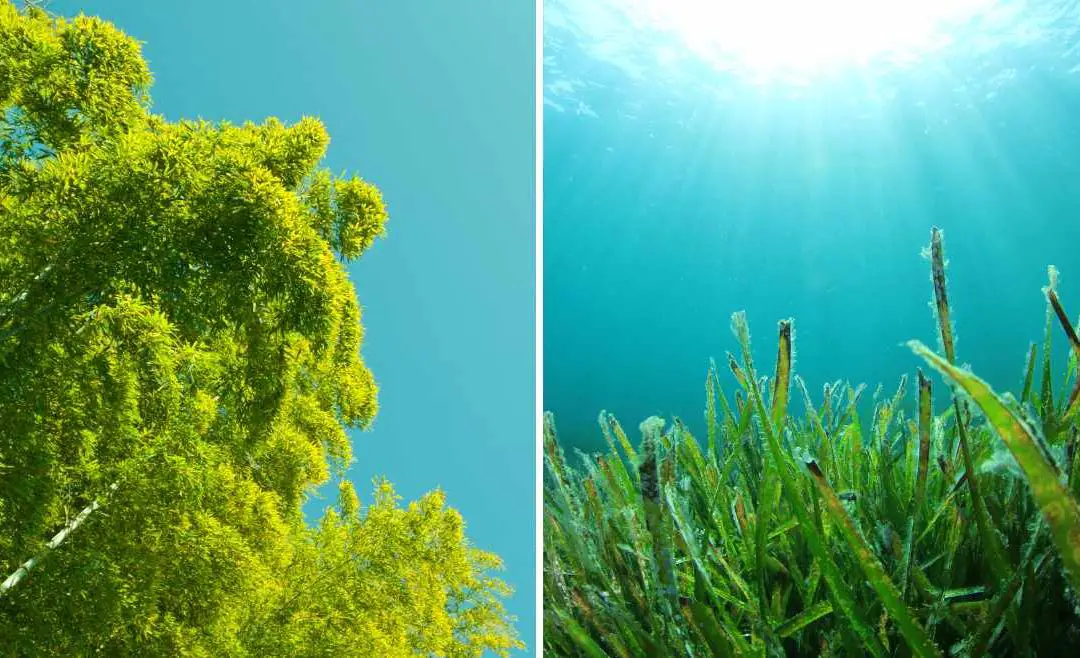These are exciting times on planet earth. Our species has never seen such a state of crisis nor opportunity. With environmental pressures pushing us to the brink of extinction, the need for adaptation is sparking all manner of radical innovation. Human activities are posing an existential threat to our forests and our oceans, and that’s precisely where we are turning to search for the most promising solutions. And as CO2 levels rise and the energy crisis intensifies, bamboo and algae have become two extremely interesting areas of research.
Bamboo is one of the fastest-growing and renewable plants on the planet. Along with its high cellulose content, this makes it a worthwhile source of biofuel, bioethanol in particular. Much smaller, but remarkably quick to multiply, green algae also has tremendous potential as an alternative biofuel source. High lipid content makes algae excellent for oil-based biodiesel, while the remaining carbohydrates provide a plentiful source of bioethanol. Unlike fossil fuels, these photosynthesizing resources are readily renewable and actually clean the atmosphere as they grow.
Kelp on the Way: Seaweed, Algae and Biofuel
We often talk about bamboo as the fastest-growing plant on earth. Such things are difficult to measure and compare, yet it’s widely agreed to be true. It might be more accurate, however, to call it the fastest-growing woody plant on earth. And if you want something in nature that can give bamboo a run for its money, then take a look at giant kelp, or Macrocystis pyrifera, which commonly grows about two feet a day.
But we should clarify a couple of things. First of all, giant kelp is not technically a plant, according to strict biological classification. Rather, it is a species of large brown algae, lacking true stems and vascular tissue. Secondly, while giant kelp may be way more impressive to look at, it’s the microalgae like Chlorella that are so interesting in the sphere of renewable energy. A distant relative to giant kelp, Chlorella is a genus of single-celled green algae that has shown great potential as a biofuel source.
And plants or not, these algae do photosynthesize, meaning they grow from sunlight while converting carbon dioxide into oxygen. Just like plants, they are all carbon negative, continuously clearing the air of CO2, the most important greenhouse gas contributing to global Climate Change. But unlike many crops, bamboo and algae require little or nothing in the way of agriculture inputs, like fertilizers and pesticides, which add more CO2 to the balance sheet.
Microalgae for biofuel
Like anything else that grows incredibly fast, giant kelp can produce significant quantities of biomass which can, in turn, provide an abundant source of biofuel. But its microscopic cousin, Chlorella, and other microalgae have certain characteristics that make them even more interesting to scientists and biofuel engineers.
Specifically, these tiny green algae are abnormally high in lipids, a class of organic fatty acids, in other words, oils and fats. Once the lipids are extracted, they can be made into biodiesel using the same process that makes fuel out of vegetable oils. Then, what’s left of the algae are mostly carbohydrates, which can be fermented to make bioethanol, an alcohol-based biofuel.
But that’s not the only advantage of green algae. Unlike giant kelp, these microalgae require relatively little space to propagate. Giant kelp flourishes in coastal seawaters, where the water is shallow enough for the sunlight to penetrate. But reproducing those conditions elsewhere is no easy task. Rural “algae farmers” can set up open ponds almost anywhere. And once the ponds are populated, the Chlorella are quick to multiply.
Initial research, from 50 or 60 years ago, suggested that algae-based fuel would never be economically competitive. But as fossil fuel supplies diminish, more governments are investing in this area of research. And private companies are clamoring to get on board as well. Further research and development are needed, but progress is underway.

Green Energy with Bamboo
In terms of biofuel, bamboo’s best application is as a source of ethanol. An entirely different process to making biodiesel (whether from algae or vegetable oil), ethanol production involves the fermentation of sugars or starches into alcohol.
As of now, most bioethanol comes from food crops, like corn and wheat, which have a high sugar (fructose) index. The sugars ferment and become ethyl alcohol, which you can add to a cocktail (yes, it’s basically that same type of alcohol) or use to fuel a combustion engine.
Trees and woody plants like bamboo generally have much less sugar but are high in cellulose. But carbohydrates and cellulose are essentially longer chains that can also break down into simple sugars, often with the help of certain enzymes. Then they too can ferment into ethanol.
When food crops enter the fray of the fuel and energy industry, this has the unintended and undesirable side effect of driving up the prices of those crops, namely wheat and corn. And that creates another set of problems, i.e. higher food prices. So the advantage of cellulosic ethanol, made from bamboo or wood pulp, is that it keeps those edible grains out of the equation.
Algae vs Bamboo
Most people agree that bamboo is a lot more interesting to farm than, well, an acre of pond scum. But how do bamboo and algae really compare?
Photosynthesis for cleaner skies
In fact, both organisms use photosynthesis, which turns sunlight into sugar and converts CO2 into oxygen. In terms of mitigating Climate Change and reducing the levels of atmospheric carbon, this is crucial. Biodiesel and bioethanol still produce CO2 when they burn in a combustion engine, but the photosynthesis process balances the equation by generating oxygen during the growing cycle.
A towering grove of timber bamboo isn’t just more attractive to look at, it clearly produces an enormous quantity of biomass. Those giant culms shoot up every year and reach full height in a single growing season. As they do so, bamboo captures a lot of carbon and generates a lot of oxygen. But algae, high in surface area and in chlorophyll, can actually absorb much more carbon than trees or bamboo.
The wide variety of species and growing conditions makes it hard to get precise figures, but studies of Moso bamboo in China indicate that one hectare of bamboo forest can sequester about 5 tons of CO2 per year. And based on the photosynthesis formula, it should release about 3.7 tons of oxygen in the process.
Meanwhile, algae farmers claim that an acre of green algae can capture about 14 tons of carbon per year. That’s about 35 tons per hectare! To put it differently, a 3-foot cube of algae absorbs about as much CO2 as an acre of hardwood trees.
We can attribute this impressive figure to the fact that unicellular algae grow so quickly, allowing harvests to take place continuously rather than seasonally. And the ultra-efficient organism expends no energy on complex structures like roots and stems.
Aquaculture and Biofuel
Larger algae like kelp and seaweed have also shown an impressive capacity to capture CO2 from the atmosphere. And their size makes them good candidates for producing biodiesel or biomass fuel. A larger proportion of seaweed farming is actually for food, but either way, the CO2 mitigation is significant.
The challenge is that the suitable coastal areas for this type of aquaculture are limited. But on the plus side, the cost of establishing a seaweed farm is a small fraction of what’s required to build and maintain an off-shore wind turbine. Kelp farming, therefore, offers a far more practical path to carbon sequestration and Climate Change mitigation in developing countries.
Green algae ponds have simpler requirements and are feasible in a wide range of climates. Open pond algae production relies on natural sunlight, taking CO2 from the air and releasing oxygen through the pond. Being especially high in lipids and carbohydrates, these microalgae are suitable for both biodiesel and bioethanol. However, despite the enormous potential, we still need a great deal more research and improvements in technology to make these biofuels practical and cost-effective.
Conclusions
The need for alternative energy sources is obvious. But if you’re looking for a silver bullet, you may be out of luck. Still, there are compelling reasons to keep studying bamboo and algae for biofuel.
Compared to some of the more technologically intensive solutions, algae and bamboo farming are viable options in less affluent countries, especially those sunny regions around the equator. Whether we grow these crops for fuel, food, or building material, their widespread cultivation can make a profound impact on the dangerous levels of CO2 accumulating in our atmosphere.
And the good news is that we don’t need to choose one or the other. The problem we find ourselves in today has a lot to do with an over-dependence on a single source of energy, petroleum. And a healthy, green future must include a diversified energy industry, where we make use of bamboo, algae, wind, solar, geothermal, and whatever makes sense in terms of the local geography and climate.
Growing Awareness
If you’re fascinated by the possibilities of bamboo and the promise of a green energy revolution, then welcome to the club! Be sure to check out some of the other in-depth articles on our website to learn more.

























